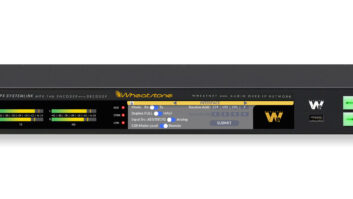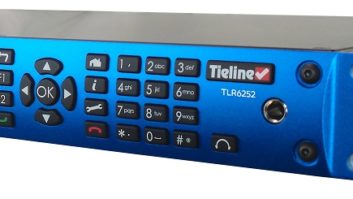Junius Kim, engineering project manager at GatesAir, will give a presentation entitled “Interoperability of FM Composite Multiplex Signals in an IP Based STL” at the upcoming 2017 Broadcast Engineering and Information Technology Conference, to be held the day prior to the opening of the NAB Show exhibit hall at the Las Vegas Convention Center.
�
The presentation is described online as: �The availability of high-bandwidth IP paths has facilitated numerous options for STL consideration. Transporting FM MPX over IP is a viable method but there are tradeoffs and benefits. Plus, many engineers want to look at STL topology in terms of how existing analog gear should, shouldn�t or even can be used. This paper will present ideas for using legacy gear and current technology for FM MPX over IP.� �
�
Junius was kind enough to take a few moments to answer some questions about the presentation via email. �
�
Doug Irwin: �Can you tell us some of the tradeoffs and benefits of sending FM MPX over IP?
�
Junius Kim: The emergence of inexpensive, high data rate, and ubiquitous IP networking is an enabler for the transport of an FM MPX signal from the studio to the transmitter link. Typically in the past, only the main stereo audio and possibly other FM baseband information such as RDS data and SCA audio would have been sent over a STL due to network data rate limitations. Now, with high data rate IP connections, the MPX signal itself, which can have a bandwidth of up to 100 kHz, can now be directly sent over the STL. The MPX signal if sampled at a rate greater than Nyquist rate along with a sample word size to support high dynamic range � 16 bits or more � can have a data rate over 3.4 Mbps. Compare this to FM stereo audio with 32 kHz sampling and 16-bit word size which has a data rate of 1 Mbps. Also keep in mind that when using IP the network data rate will be significantly greater than the payload data rate due to overhead from packetization and possibly other things like forward error correction to protect against packet loss. �
�
With FM MPX transport we can �tailor� the transport parameters to support the customer requirements. For example, if only FM main audio plus RDS is needed, then the sampling rate can be reduced since only 60 kHz of MPX bandwidth needs to be supported. This can decrease the payload data rate from 3.4 Mbps to 2.1 Mbps. �
So MPX transport does result in greater network data rates over an STL vs. FM baseband component transport. This can be mitigated to some extent by being able to �tune� the sampling parameters to match the customer requirements. The advantage of MPX transport is the stereo generation process and RDS encoding can be done once, be located at the studio, and can distributed out to many transmit sites resulting in equipment cost savings.�
�
We�ve been discussing MPX transport in terms of an analog/digital conversion process however digital MPX or MPX over AES/EBU is being seen on more and more FM processing equipment from multiple vendors. MPX over AES/EBU is a direct digital equipment interconnection between FM audio processors and FM exciters using the AES/EBU standard at 192 kHz sampling. This eliminates any degradation of the audio due to analog processing and noise. The one channel of an AES/EBU signal at 192 kHz has a data rate of about 6 Mbps. When transporting this signal over a WAN, this data rate can be reduced since it�s only necessary to transport the 24-bit sample word across the STL. Other AES/EBU data such as parity, synchronization, and metadata can be regenerated at transmitter site to save network bandwidth. One channel of 192 kHz, 24-bit word, has a data rate of 4.6 Mbps.
�
Irwin: Can you give us perhaps an idea or two for the use of legacy gear with FM MPX over IP?�
Kim: �Analog MPX is compatible with most existing FM plant infrastructure while digital MPX is a relatively new operating standard first introduced in 2013 and possibly requiring acquisition of compatible equipment. For interoperability between the two, the MPX signal can be bridged from analog to digital or from digital to analog. This is useful when interoperating between older FM equipment not supporting digital MPX and newer FM equipment which does. For example, an older FM stereo generator at the studio can interoperate with a new FM exciter through a MPX bridging device. Conversely, a new FM stereo generator can interoperate with an old FM exciter through a MPX bridge. This hybridized bridging device sits between digital and analog domains of operation. The bridging can be a device between co-located FM equipment or the bridging function can span an STL when it is integrated into a MPX codec.�
�
Interoperability of FM Composite Multiplex Signals in an IP Based STL will be presented on April 23, at 11:30 a.m., at LVCC N256. ��
�












